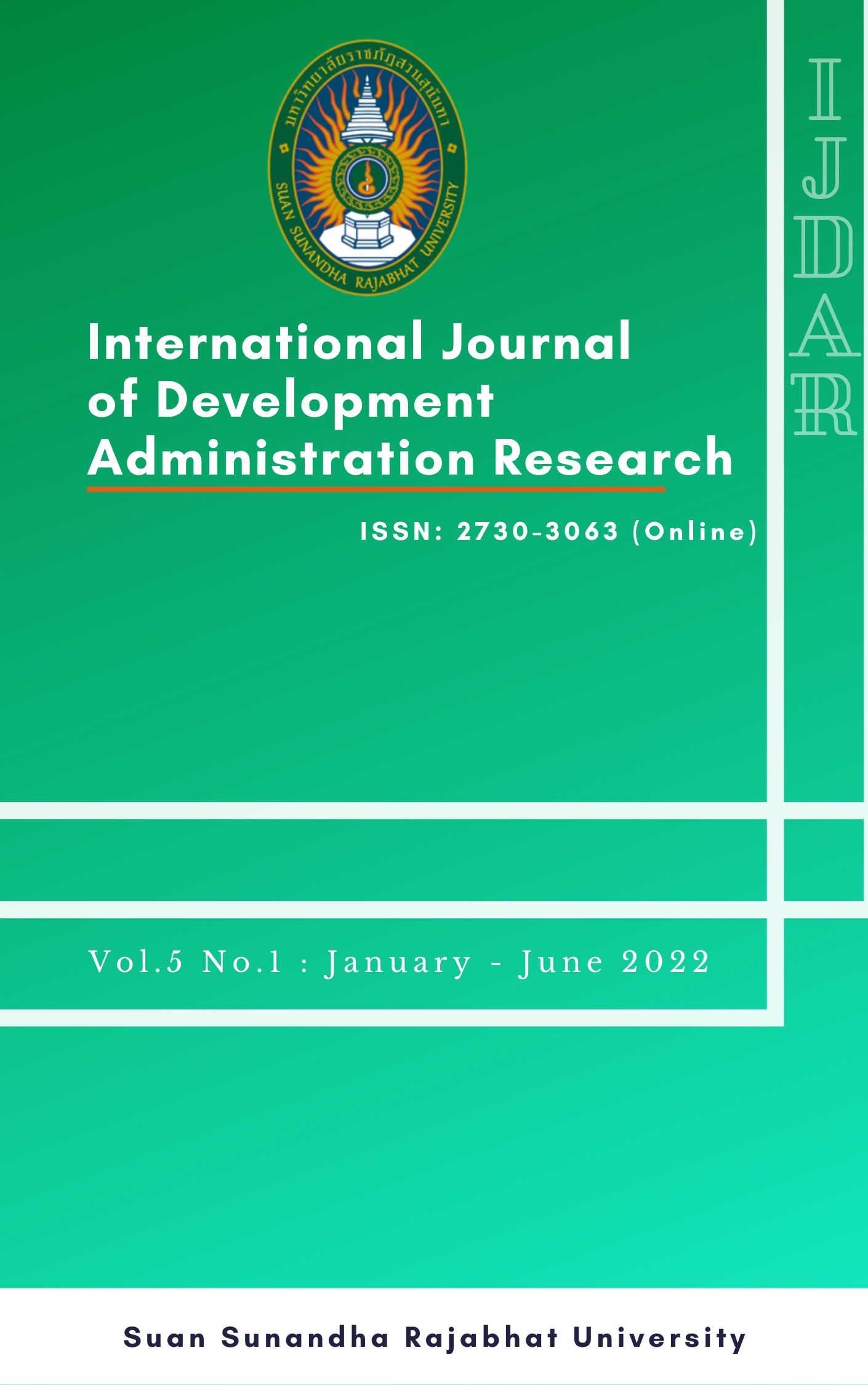Exploring the Implementation of Sister City Relationship Policy by Thai Provincial Governments
Main Article Content
Abstract
As a result of the Thai public sector reform in 1998, the Thai central government has encouraged fair distribution of powers and resources that will result in better cross-functional policy integration from central to regional government agencies. Many policies including international cooperation related policy is being promoted and carried out by regional government. One of the most well-known international cooperation policy that is being implemented by regional government is “Sister City Relationship Policy”.
The policy aims to create opportunities for vast areas of cooperation opportunity such as trade and investment and different areas of exchanges in hoping to enhance provincial development. The policy is initiated by Ministry of Interior (central government) and implemented by provincial government (regional government). Currently, sister city relationship policy in Thailand is still being undermined or even viewed as wasteful by the Thai government due to lack of tangible result and impact. The concept of sister city relationship policy for the Thai government still needs further study and understanding by all stakeholders to ensure implementation effectiveness. Therefore, this research aims to study characteristics of implementation by provincial government, and identify the problems arise from implementation to propose recommendation
This research found that although provincial governments are the main implementer of the policy, under the current public management system, the implementation of sister city relationship policy are involved by all level of organizations including central governments, provincial governments, and local organizations where each organization plays specific roles and functions. However, It was found that although sister city relationship policy in Thailand has been implemented by many provincial governments for many years, it lacks integration among stakeholders. As a result, the policy is facing with many implementation limitation including, limited rules and regulations, unclear strategic plan, unsuitable partnership, constant change of leadership, unable to produce positive attitude toward relationship, limited management and resource, and lack of evaluation process.
Article Details
References
Biggs, P. C. (2003). Managing Cultural Differences in Alliances. Retrieved from www.alliancestrategy.com
Chamniprasart, P. (2018). Ministry of Interior's Sister City Policy for Regional Development. www.fad.moi.go.th: Foriegn Affairs Division, Ministry of Interior, Thailand Retrieved from http://www.fad.moi.go.th/images/Sister-City_report.pdf
Cremer, R. D., De Bruin, A., & Dupuis, A. (2001). International Sister‐Cities: Bridging the Global‐Local Divide. American Journal of Economics and Sociology, 60(1), 377-401.
De Villiers, J. C. (2009). Success factors and the city-to-city partnership management process–from strategy to alliance capability. Habitat International, 33(2), 149-156.
Habitat, U. N. (2001). City-to-city cooperation: issues arising from experience. UN Habitat, Nairobi.
Lendrum, T. (2003). The strategic partnering handbook: The practitioners' guide to partnerships and alliances: McGraw-Hill.
Mascitelli, B., & Chung, M. (2008). Using Sister City relationships to access the Chinese market. Journal of international trade law and policy.
Sistercities.org. (n.d.). What Is a Sister City? . Retrieved from https://sistercities.org/about-us/what-is-a-sister-city-3/
Srikaow, P. (2020, 15 June) /Interviewer: Putikan. Bangkok.


